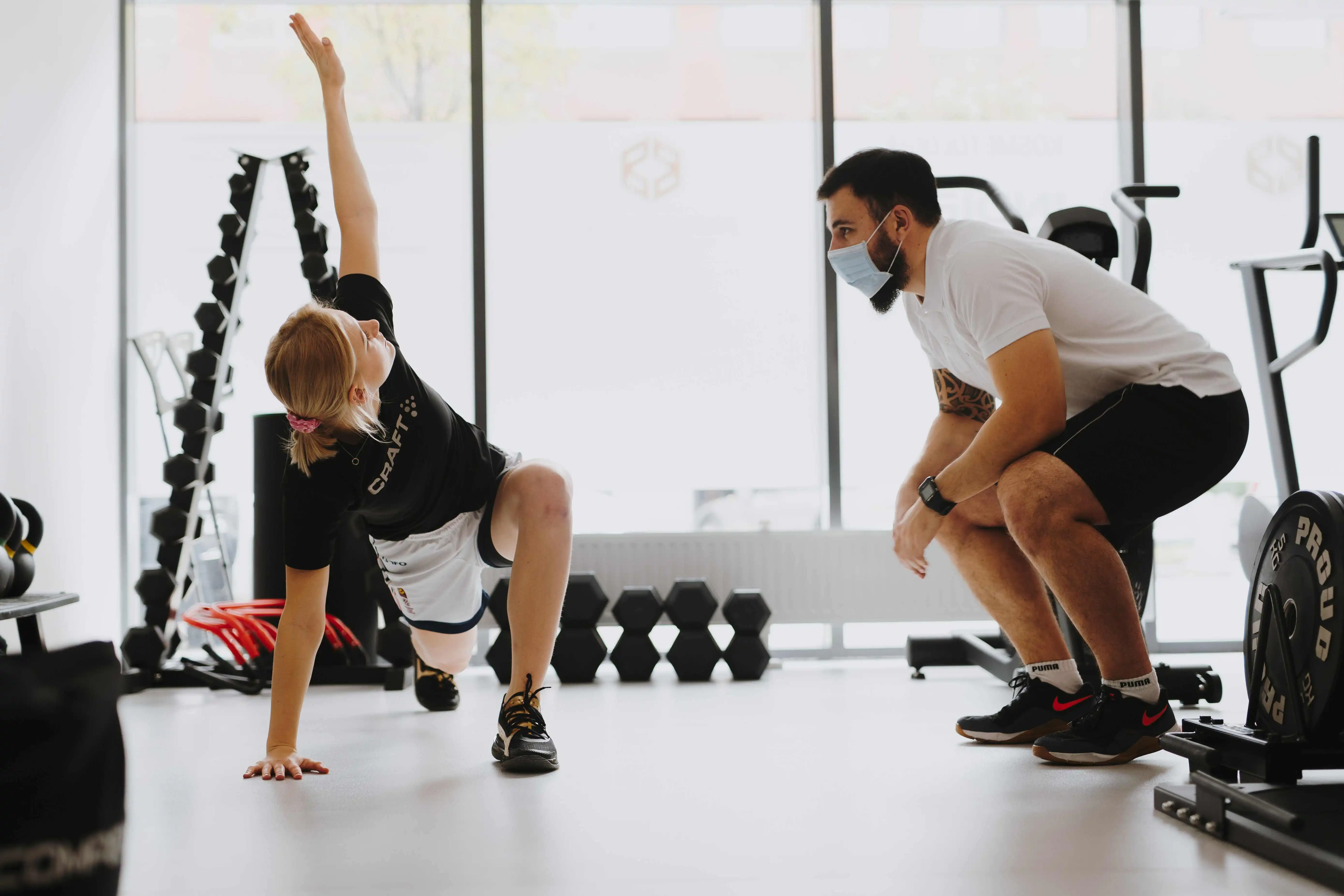
Training area at the Physio practice: How to increase revenue for your business?
- Sebastian Pietak
- 15 September 2022
- 3 min czytania
Physiotherapy practice owners face many challenges along the way. The first and most important is heavily rotating patients. They show up at the clinic when a need exists - an injury, a painful condition, etc. After a few treatments, he disappears and often never shows up again. Another major challenge is the fragmented market with the constantly changing competition.
If a clinic doesn't have a strong brand, doesn't have significant differentiators in its offerings, and its marketing efforts are going downhill, it may be hard for it to stay in business in the coming years.
Sometimes trying to keep clients for a longer period of time by offering additional services can make a huge change for a clinic and increase its profits hugely.
Entrepreneurs who understand what LTV (lifetime value) and value ladder is and successfully increase their services can successfully avoid many obstacles standing in their way.
What is LTV and value ladder?
The term LTV tells us the average value of our customer over a given period of time. The components for calculating LTV are average purchase value * average number of purchases * retention period (period of being brand loyal). Constant monitoring of this metric is extremely important in the context of most current business. It is also important to work on continuously increasing LTV, which translates directly into business revenue.
A value ladder is nothing more than creating the right offerings and arranging products/services according to their value. Typically, such ladders have 3-5 rungs (i.e. 3-5 services or products)
A simple example for a physio's office:
- 1. Quality analysis of movement patterns by Functional Movement Screen FMS (free consultation).
2. Trial - 1 consultation showing mobility exercises to do at home - suggested price 199EUR.
3. Package of 6 relaxing massages to increase ranges of motion - suggested price 1 199EUR.
4. manual therapy 6 and 12 workouts - proposed price 3,999EUR with the possibility of payment in installments.
Based on the above example, an incentive to visit the office is a functional fitness assessment. Anyone can examine their body for limitations, compensations and dysfunctions under the guidance of a professional.
Such a service is a good way to start a long-term relationship. Due, for example, to the sedentary lifestyle that a large number of people lead, we are constantly experiencing various kinds of ailments or limitations, with which sooner or later we will appear at a specialist. Our expectation and his task is to select the best method of therapy for us from the range of his services in the ladder.
We offer a consultation where we discuss with the client a dedicated set of exercises to be performed at home or a 1:1 collaboration and a package of relaxing massages.
If the collaboration goes well and we see results with the patient, we can climb further up the rungs of our service ladder and offer them more advanced services.
Using the example above, we can see that services are generally arranged in such a way that, at the expense of price, they give the client more value, but also more time commitment on the part of the physiotherapist.
Training zone a natural way of scaling business
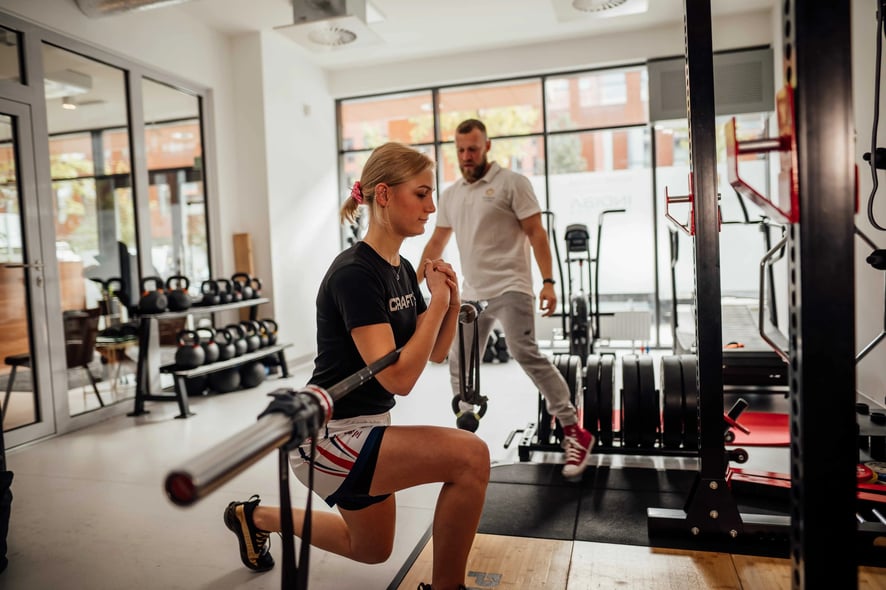
Surveys of American businesses show that it is 6-7 times cheaper to keep an existing customer than to acquire a new one. Following this lead, it is worth thinking about what we can offer our clients to make them stay with us as long as possible.
As we mentioned at the beginning of the article, the large majority of clients in offices are injury clients who visit physiotherapists for specific post-injury rehabilitation.
The natural follow-up after the rehabilitation process is to be introduced to strength training.
If you want to grow your business and retain clients, you should think about a small training area for medical training. It will also be a big differentiator among competitors.
What should the training area in physiotherapist practice look like?
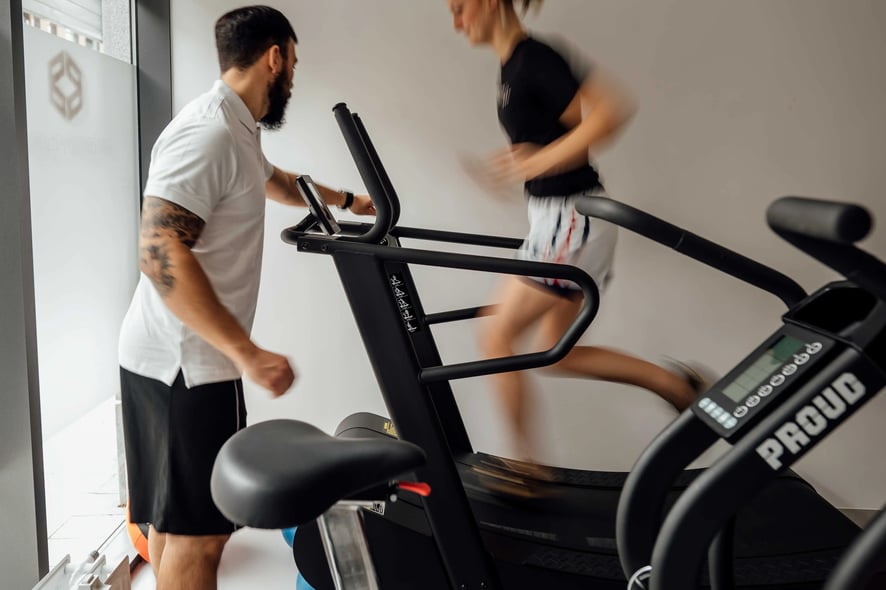
When investing in an exercise area, it is necessary to think about the surface possibilities of the place you own or lease. The optimal area for 3-4 people exercising at the same time should be within 25-60m2.
Thinking about equipment, it is worth betting on equipment with a simple design, but multifunctional. This will allow you to work with patients in countless training variations with significant space savings.
The area should also have cardio equipment in its assortment. In many implementations of this type, the Air Bike exercise works well. Its design allows the upper or lower part of the body to be isolated during training. This is especially important when introducing activity to patients just after an injury.
Dumbbells or kettlebells weights allow you to work in many planes. They give a lot of freedom in the selection of variants of exercises and customization for the needs of the client. It is important to provide yourself with the widest possible weight range of loads for the needs of different groups of exercisers.
A gymnastic ladder is an integral part of any practice where active rehabilitation is carried out. In the training area, we can extend such a ladder with additional accessories - bench, bar, TRX bands, thus increasing its functionality.
A Dual-Pulley machine or training gate is another option that fits firmly into the profile of medical training. These are stack pulleys that do not in any way force the exerciser into a movement path. Their multifunctionality allows you to perform exercises for any body part.
We recommend getting acquainted with one of our realizations - CM Salus
Example of a 24m2 zone
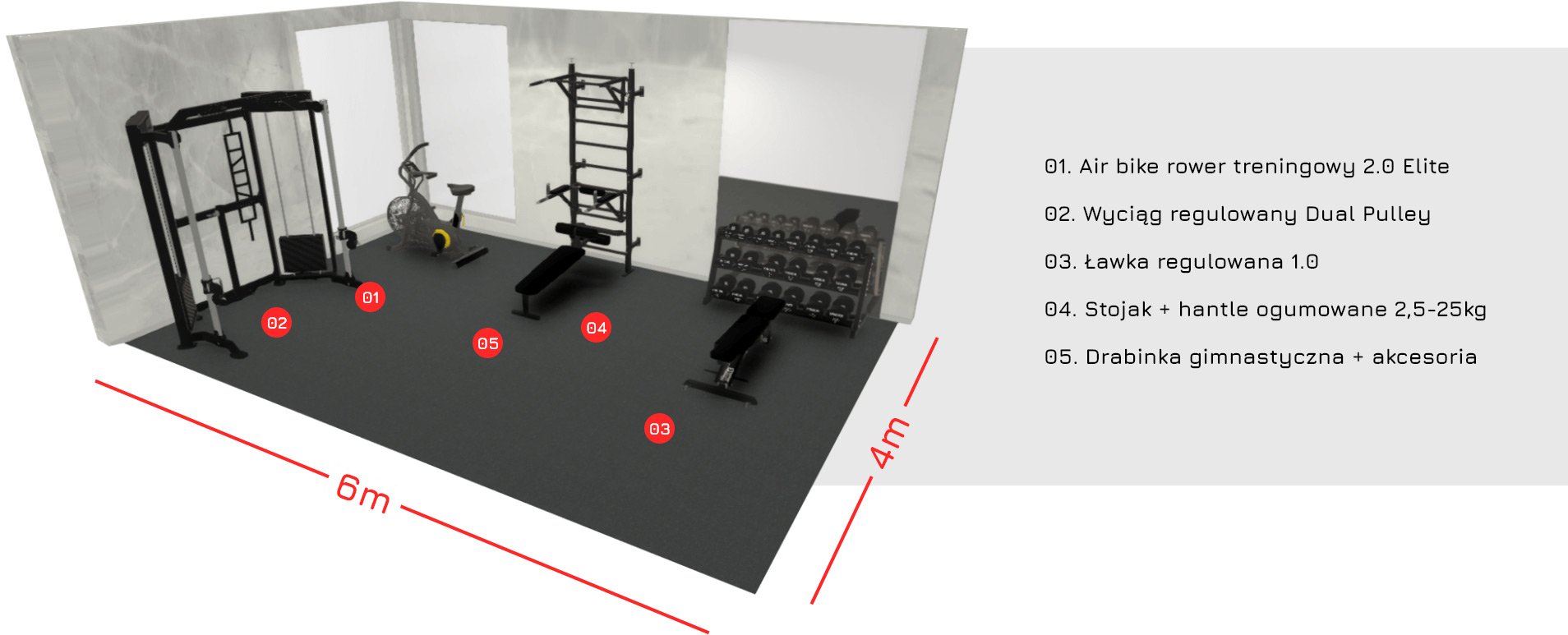
Example of a 35m2 zone
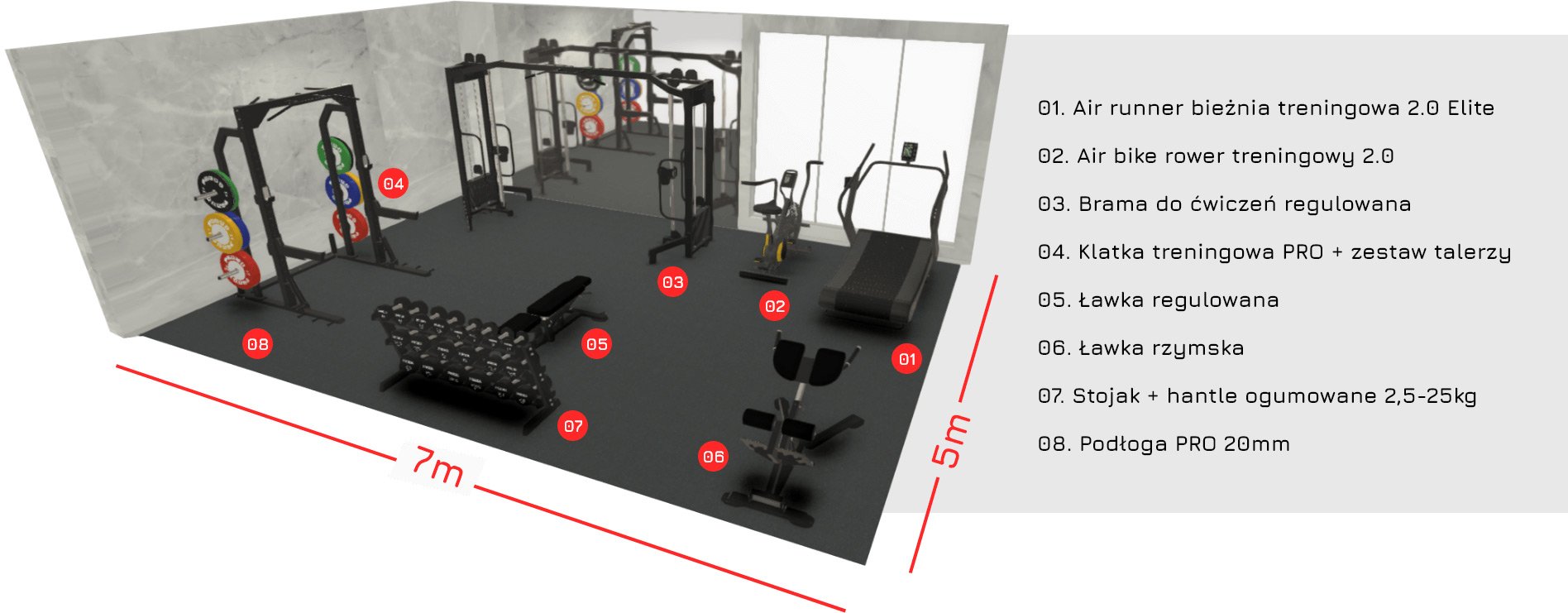
Summary
When running a physical therapy clinic in a competitive market, you should operate according to a strictly defined plan. It is better to keep an existing client than to try to attract new ones. One of the best ways to grow your practice is to create an exercise area and convert from a patient to an exercise client.
 Google Maps - zobacz opinie Klientów
Google Maps - zobacz opinie Klientów Opineo - zobacz opinie Klientów
Opineo - zobacz opinie Klientów Wróć do Bazy Wiedzy
Wróć do Bazy Wiedzy